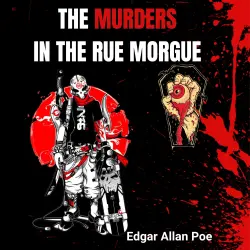
The Woman in White
Wilkie Collins
Unabridged
1 dag 1 uur 18 minuten
Opmerking: Er kunnen kosten verbonden zijn aan het afspelen van de audioboeken of hoorspelen op de respectievelijke platforms, bijv. Spotify. Lismio heeft geen invloed op welke luisterboeken en hoorspelen beschikbaar zijn op de service.
Sommige artikelen bevatten affiliate links (gemarkeerd met een sterretje *). Als je op deze links klikt en producten koopt, ontvangen we een kleine commissie zonder extra kosten voor jou. Uw steun helpt ons deze site draaiende te houden en nuttige inhoud te blijven maken. Hartelijk dank voor uw steun!
Van de uitgever
The Woman in White by Wilkie Collins Audiobook - is Wilkie Collins's fifth published novel, written in 1859 and set from 1849 to 1850. It is a mystery novel and falls under the genre of "sensation novels".
The story can be seen as an early example of detective fiction with protagonist Walter Hartright employing many of the sleuthing techniques of later private detectives. The use of multiple narrators (including nearly all the principal characters) draws on Collins's legal training, and as he points out in his preamble: "the story here presented will be told by more than one pen, as the story of an offence against the laws is told in Court by more than one witness". Collins also drew on memories of his father, the artist William Collins, in the creation of drawing master Walter Hartright, and populates his story with a number of Italian characters, likely inspired by two years spent in Italy during childhood.
Plot: Walter Hartright, a young art teacher, encounters and gives directions to a mysterious and distressed woman dressed entirely in white, lost in London; he is later informed by policemen that she has escaped from an asylum. Soon afterwards, he travels to Limmeridge House in Cumberland, having been hired as a drawing teacher on the recommendation of his friend, Pesca, an Italian language teacher. The Limmeridge household comprises the invalid Frederick Fairlie and Walter's students: Laura Fairlie, Mr. Fairlie's niece, and Marian Halcombe, her devoted half-sister. Walter realises that Laura bears an astonishing resemblance to the woman in white, who is known to the household by the name of Anne Catherick, a mentally disabled child who formerly lived near Limmeridge and was devoted to Laura's mother, who first dressed her in white.
Over the next few months, Walter and Laura fall in love, despite Laura's betrothal to Sir Percival Glyde, Baronet. Upon realising this, Marian advises Walter to leave Limmeridge. Laura receives an anonymous letter warning her against marrying Glyde.
Walter deduces that Anne has sent the letter and encounters her again in Cumberland; he becomes convinced that Glyde originally placed Anne in the asylum. Despite the misgivings of the family lawyer over the financial terms of the marriage settlement, which will give the entirety of Laura's fortune to Glyde if she dies without leaving an heir, and Laura's confession that she loves another man, Laura and Glyde marry in December 1849 and travel to Italy for six months. Concurrently, Walter joins an expedition to Honduras.
The story can be seen as an early example of detective fiction with protagonist Walter Hartright employing many of the sleuthing techniques of later private detectives. The use of multiple narrators (including nearly all the principal characters) draws on Collins's legal training, and as he points out in his preamble: "the story here presented will be told by more than one pen, as the story of an offence against the laws is told in Court by more than one witness". Collins also drew on memories of his father, the artist William Collins, in the creation of drawing master Walter Hartright, and populates his story with a number of Italian characters, likely inspired by two years spent in Italy during childhood.
Plot: Walter Hartright, a young art teacher, encounters and gives directions to a mysterious and distressed woman dressed entirely in white, lost in London; he is later informed by policemen that she has escaped from an asylum. Soon afterwards, he travels to Limmeridge House in Cumberland, having been hired as a drawing teacher on the recommendation of his friend, Pesca, an Italian language teacher. The Limmeridge household comprises the invalid Frederick Fairlie and Walter's students: Laura Fairlie, Mr. Fairlie's niece, and Marian Halcombe, her devoted half-sister. Walter realises that Laura bears an astonishing resemblance to the woman in white, who is known to the household by the name of Anne Catherick, a mentally disabled child who formerly lived near Limmeridge and was devoted to Laura's mother, who first dressed her in white.
Over the next few months, Walter and Laura fall in love, despite Laura's betrothal to Sir Percival Glyde, Baronet. Upon realising this, Marian advises Walter to leave Limmeridge. Laura receives an anonymous letter warning her against marrying Glyde.
Walter deduces that Anne has sent the letter and encounters her again in Cumberland; he becomes convinced that Glyde originally placed Anne in the asylum. Despite the misgivings of the family lawyer over the financial terms of the marriage settlement, which will give the entirety of Laura's fortune to Glyde if she dies without leaving an heir, and Laura's confession that she loves another man, Laura and Glyde marry in December 1849 and travel to Italy for six months. Concurrently, Walter joins an expedition to Honduras.















